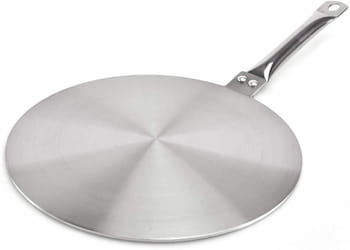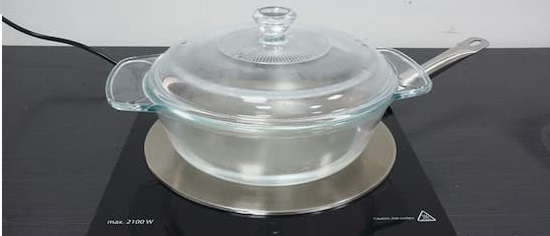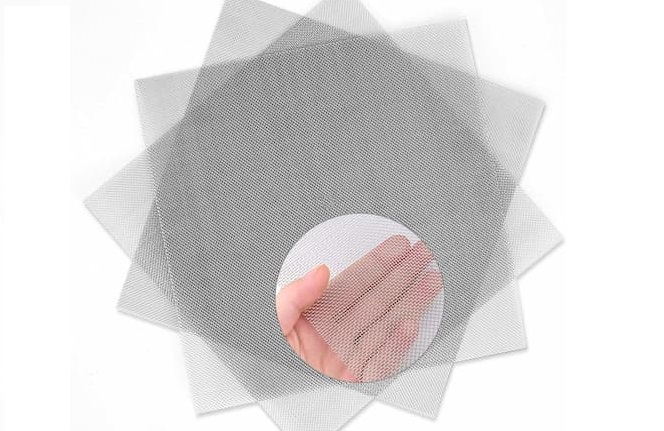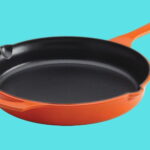How to use Non Induction Cookware on Induction Cooktop – 3 Effective Ways

Induction cooking is becoming increasingly popular due to its many advantages. As compared to other traditional stoves, induction stoves are efficient easy to use and they heat up quickly.
However, if you don’t have induction-compatible cookware, you may be wondering how to use your non induction cookware on an induction cooktop.
There are a few things you can do to make this work and get the most out of your induction stove.
In this blog post, we’ll show you how to use non induction cookware on an induction cooktop.
Understand how an induction cooktop works first
Before going to know how to use non induction cookware on an induction cooktop, it’s important to understand what an induction cooktop is and how it works.
An induction cooktop uses electromagnetism to create heat. This means that the cooktop itself doesn’t generate any heat – it only transfers heat from the pot or pan to the food.
To use an induction cooktop, you’ll need cookware that contains ferrous metal. This includes cast iron and stainless steel. The cookware must also be ferromagnetic, which means it must be able to create a magnetic field.
This is why you need induction ready cookware for an induction stovetop because not all cookware is made with metal.
If you’re not sure if your cookware is induction-compatible, here are a few tips:
- Most stainless steel cookware is induction-compatible, but an aluminum or copper cookware is not.
- If your cookware has a magnet on it, it’s induction-compatible.
- If your cookware is stamped with the words “induction compatible,” it’s induction-compatible.
- Take a small magnet and hold it up to the bottom of the pot or pan. If the magnet sticks, then your cookware is compatible. If a magnet sticks to the bottom of your cookware, it will work on an induction stovetop. If the magnet does not stick, your cookware is not compatible.
Now the question is can you use regular cookware On Induction Cooktop? The answer is Yes.
If you don’t have any induction-compatible cookware, don’t worry – there are plenty of options available.
Some of the best ways to use non-induction cookware on an induction cooktop are as follows:
3 Ways to use non induction cookware on induction stoves
Use an Induction Converter Disk

If you have incompatible cookware or an induction stovetop and want to use regular cookware, a converter disk is a great solution.
With an induction Converter Disk, you can still use your regular cookware on an induction stovetop with a compatible Converter. It’s an affordable way to make all of your cookware work on your induction stovetop.
An induction converter is a ferrous disk that you place between your cookware and the stovetop. It will allow you to use any cookware, even if it’s not induction-ready.

The converter(adapter) will get hot and transfer the heat to your cookware, just like an induction-compatible pot or pan would.
There are a few things to keep in mind when using an Induction Converter Disk:
- Make sure to place the converter disk on a completely flat surface, otherwise, it may not work properly.
- Don’t use too much pressure when cooking, as this can damage the adapter.
- Don’t leave the adapter on the stovetop when you’re not using it – it can get hot.
Potential Drawbacks of Using Converter Disk
There are a few potential drawbacks to using converter disks. The first is that they’re not as efficient as induction-ready cookware. This means that it will take longer to cook your food.
The other downside is that they can be a bit cumbersome to use. You’ll need to make sure that the disk is in contact with the bottom of your cookware at all times. This can be tricky, especially if you have a large pot or pan.
Another potential drawback is that the converter disk can get quite hot. So, you’ll need to be careful when using it and make sure to keep children and pets away from it.
Use Steel Wire Mesh Sheet

Here I have got a cheaper and easier option for you guys which is to use a steel wire mesh sheet. You can easily get this product from any hardware store near you.
Take the steel wire mesh sheet and cut it according to the size of your cookware base.
Now place the steel wire mesh sheet on the induction cooktop and then put your cookware on it. The steel wire mesh sheet will create a magnetic field, which will allow the induction cooktop to heat up your pot or pan.
Using Computer Thermal Paste
This method is a bit more involved, but it will work if you have the proper materials.
First, you’ll need to clean the bottom of your cookware. Next, apply a layer of thermal paste to the bottom of the cookware. You can find thermal paste at any computer store or online. Finally, place your cookware on the induction cooktop.
The thermal paste will create a connection between the bottom of your cookware and the induction cooktop, allowing it to heat up.
If you’re not comfortable with this method, or if you don’t have the proper materials, we don’t recommend trying it.
Now that you know how to use non-induction cookware on an induction stovetop, you can use any cookware you want.
Conclusion
So, if you don’t have induction-compatible cookware or an induction stovetop, there are plenty of ways to work around it. You can use a converter disk, steel wire mesh sheet, or thermal paste to create a magnetic field and heat up your pot or pan. These methods may be a bit more cumbersome than using induction-ready cookware, but they’ll work in a pinch.
FAQs
What is the difference between induction and non-induction cookware?
The main difference between induction and non-induction cookware is the material. Induction cookware is made with ferrous metal, while non-induction cookware is not.
This means that induction cookware will work on an induction stovetop, while non-induction cookware will not.
Induction cookware is also generally more expensive than non-induction cookware. This is because it’s made with special materials that allow it to work on an induction stovetop.
What are some of the pitfalls to avoid when using non-induction cookware on an induction cooktop?
When using non-induction cookware on an induction cooktop, you may experience some of the following problems:
When using non-induction cookware on an induction cooktop, you may find it difficult to achieve the desired cooking temperature.
Additionally, you may notice that your cooktop doesn’t heat up as quickly as it usually does or that it doesn’t heat at all.
What is induction cooking and what are the benefits of traditional cooking methods?
Induction cooking is different from traditional cooking methods, such as gas or electric, because it is more energy-efficient.
Additionally, induction cooking is faster and more responsive than traditional cooking methods, which makes it a great choice for cooking precision tasks like frying or simmering.
What Happens If You Put a Non-Induction Pan on an Induction Stove?
What happens if you put non-induction-ready cookware like cast iron, carbon steel, or aluminum on an induction stovetop? In that case, the pan will not heat up because there is no ferrous metal for the induction cooktop to create a magnetic field.
Does Cast Iron work on an induction cooktop?
Yes, cast iron can be used on an induction cooktop. However, it is important to use a flat-bottomed pan and to avoid moving the pan around too much, as this can scratch the surface of the cooktop.
What are the benefits of using an induction cooktop?
There are a few benefits of using an induction cooktop:
They’re more energy-efficient than traditional cooking methods like gas or electric.
They’re faster and more responsive than traditional cooking methods.
They’re a great choice for cooking precision tasks like frying or simmering.
What are the different types of induction cooktops?
There are two main types of induction cooktops: portable and built-in. Portable induction cooktops are small and easy to move, while built-in induction cooktops are designed to be installed in a permanent kitchen countertop.
What is the difference between a portable induction cooktop and a built-in induction cooktop?
The main difference between portable and built-in induction cooktops is their size. Portable induction cooktops are small and easy to move, while built-in induction cooktops are designed to be installed in a permanent kitchen countertop. Additionally, built-in induction cooktops typically have more features and cooking settings than portable induction cooktops.
Do I need special pots and pans for an induction cooktop?
Yes, you need special pots and pans that are labeled “induction-ready.” If a pot or pan is not labeled as induction-ready, it will not work on an induction cooktop.
Related Posts:
- Does Aluminum Pan Work on Induction Stove
- Does Stainless Steel Work on Induction Cooktop
- Induction Cooktop Pros and Cons
- Can you use Induction Cookware on a Gas Stove
- Do Induction Cooktops Get Hot and Can Be Touched
- Induction Cooktop Vs Electric Cooktop
- Can you use Hard Anodized Cookware on Induction Stove
- How to Clean Induction Cooktop
- Does wok work on an induction stove




